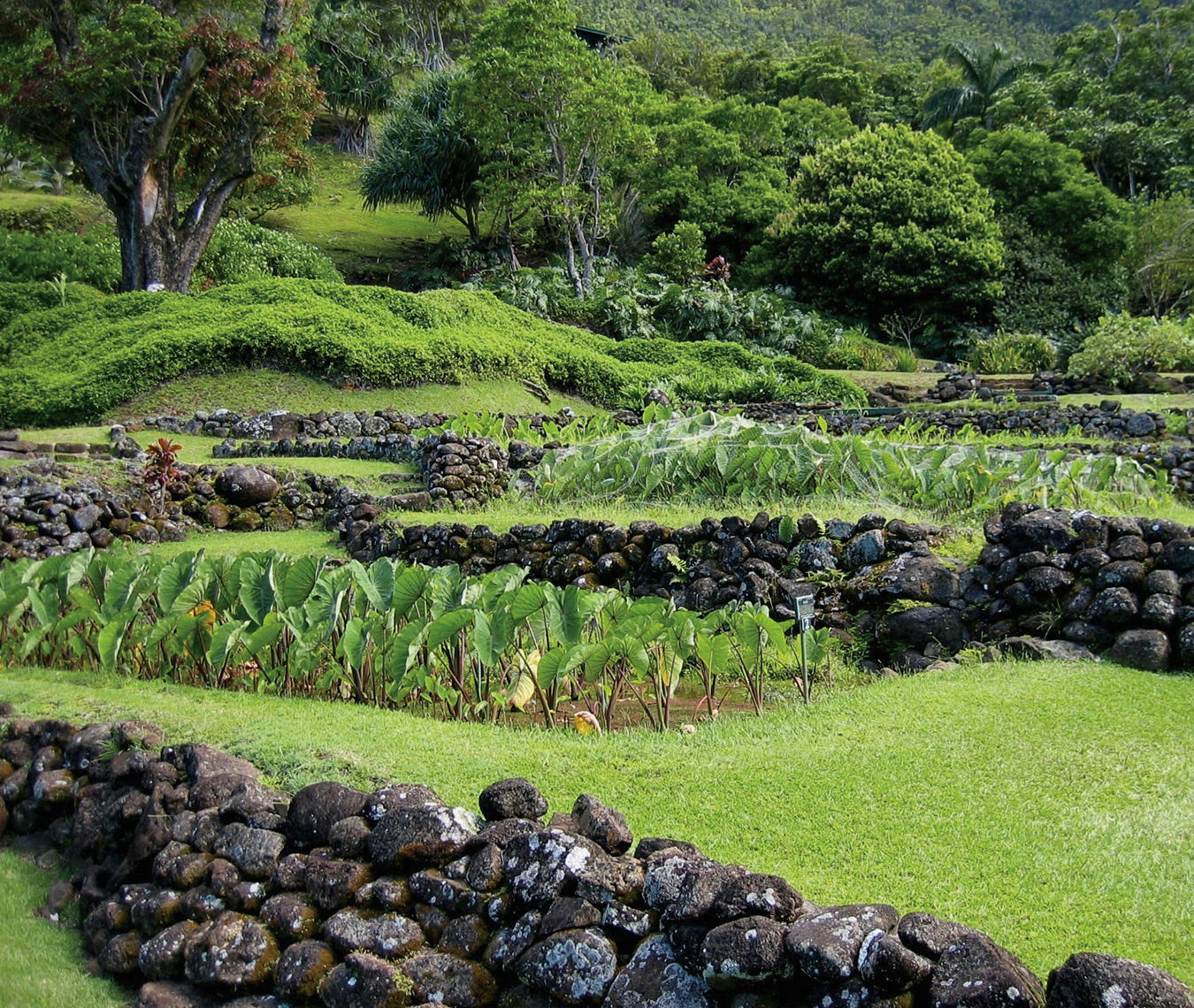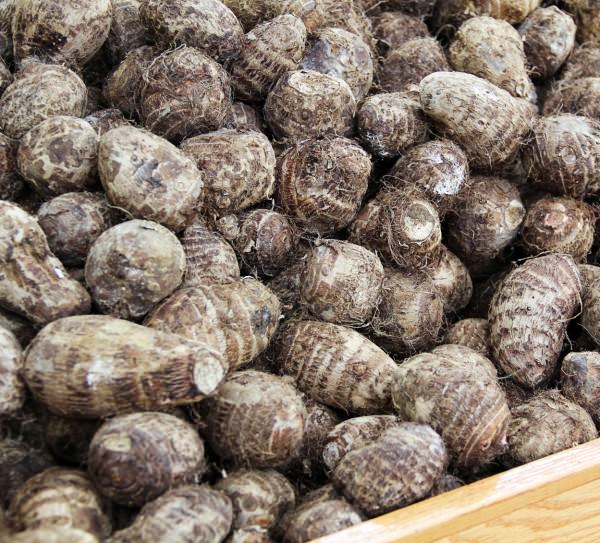Taro
Hawaii's cultural roots.

An ancient taro garden in Hawaii. Photo ©Melissa Burtram/iStock Photo.
Waikiki is a boom town of hotels, resorts, and high-rises, with surf, sand, and sun. It’s hard to believe this tropical metropolis was once a marshy taro paddy. Yet, as it happens, the Honolulu beachfront neighbourhood’s name literally translates from Hawaiian to “spouting water”, denoting the natural rivers and springs that once flowed through the area and made Waikiki one of the most productive taro-growing regions in all the islands of Hawaii (until about 1907).
Although urban development, economic growth, and external influences have dramatically changed the way of life for many residents on Oahu, some traditional beliefs and cultural practices remain firmly entrenched. Taro—or kalo, as the root vegetable is locally known—has been a staple food for as long as Hawaiians have existed in Hawaii, and it is still revered as the giver of mana, or life force.
According to the “Kumulipo”, a folkloric Hawaiian chant, the gods Wākea and Ho’ohokukalani produced two children. The first boy, Hāloa-naka, was stillborn and buried; the second, Hāloa, became the first to live on the islands and is believed to be the one from whom all Hawaiians descend. And just as elder siblings take care of the younger in a Hawaiian ‘ohana (family), a kalo plant grew from Hāloa-naka’s grave to nourish Hāloa and the people of Hawaii henceforth. Although today it may be accepted that it was Polynesian settlers who brought Colocasia esculenta, the 50,000-year-old plant of Indo-Malayan origin, to Hawaii around AD 900 to 1000, the “Kumulipo” captures the significance of kalo in defining Hawaii’s cultural identity.
Furthermore, one might be surprised to learn that the Hawaiian luau has less to do with salty, succulent kālua pork and more to do with lū‘au, or taro leaves. The practice of this feast stems from wrapping laulau (taro corms, breadfruit, sweet potatoes, fish, and poultry) in lū‘au and baking them in a dug-out ground oven. (The residue from the leaves has an earthy and somewhat bitter flavour.)
Once the taro corm is steamed or baked, it’s then “ready for ku‘i”, meaning it can be pounded into po‘i. The cooked taro is macerated with a heavy, wetted stone pestle until it reaches a sticky, doughy paste. Hawaiians rarely agree on how it is best enjoyed; general consensus is reached at two fingers thick, indicating how many fingers it will take to separate and hold a dollop of po‘i in one’s hand. The other consideration is whether to eat the po‘i fresh or let it ferment.

Taro, or kalo, as the root vegetable is locally known in Hawaii, is revered as the giver of mana, or life force. Photo ©Sue Ding/iStockPhoto.
Despite the abundance of fresh produce at Oahu’s bustling farmers markets, finding the bulbous root is more difficult than anticipated. But that’s not to say it’s missing altogether; local bakers have given rise to taro in bread form by incorporating taro powder, a packaged product derived from dehydrated po‘i, into their dough. The result is light and fluffy bread with a smooth texture and subtle nutty flavour.
The reality for many farmers, however, is that taro is expensive to grow. It requires extensive irrigation, and industrial rice, sugar cane, and pineapple production has diverted groundwater away from traditional lo‘i (taro fields). Not to mention that dietary changes have supplanted demand for taro. Hawaii, today, accounts for only one per cent of worldwide taro production, the rest being cultivated primarily in Asia and Africa, with Nigeria as the top producer.
Yet Hawaiians new and old are reinvigorating taro. Last year, James Beard Award–winning chef George Mavrothalassitis of Honolulu’s Chef Mavro restaurant celebrated the 20th anniversary of the Hawaii Regional Cuisine culinary movement by preparing a “Greatest Hits” menu that included delightful ahi and caviar tartare inponzu sauce on a snappy, grounding taro chip.
Chef Mark Noguchi recently opened the He‘eia Pier General Store and Deli, a waterfront food shack in quaint Kaneohe, Oahu, where he caters farm-to-table foods with sides like kalo macaroni salad. At Honolulu’s monthly Eat the Street food cart rally, trucks serve up grindz so ono they break da mouth (that’s Hawaiian slang for really damn good food).
Jimmy Chan, founder of the Hawaiian Chip Company, is also cashing in on taro’s cultural cachet. At the company’s Honolulu headquarters, his made-to-order sweet potato and taro chips are fried up in an instant—then it’s up to each customer to douse them in their favourite seasoning.
On Maui, Kauai, and the Big Island, chef Peter Merriman occasionally features taro croquettes and taro-patty burgers on the menus of his three eponymous restaurants. With such versatility, it may only be a matter of time before every component on the plate is somehow made with taro.
Top photo ©Melissa Burtram/iStock Photo.




